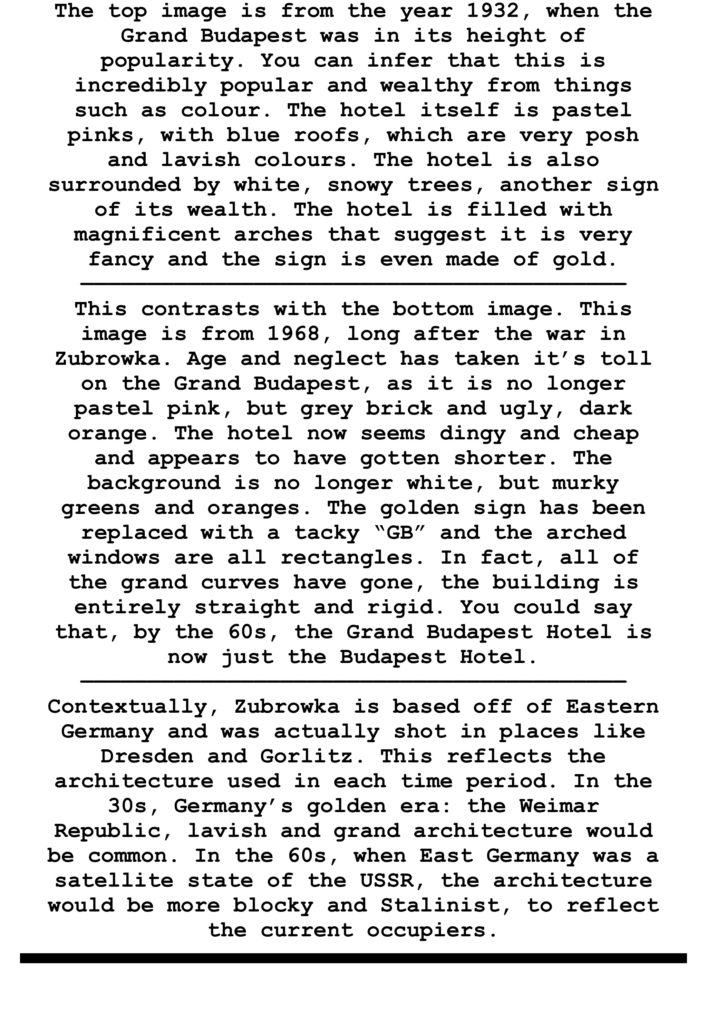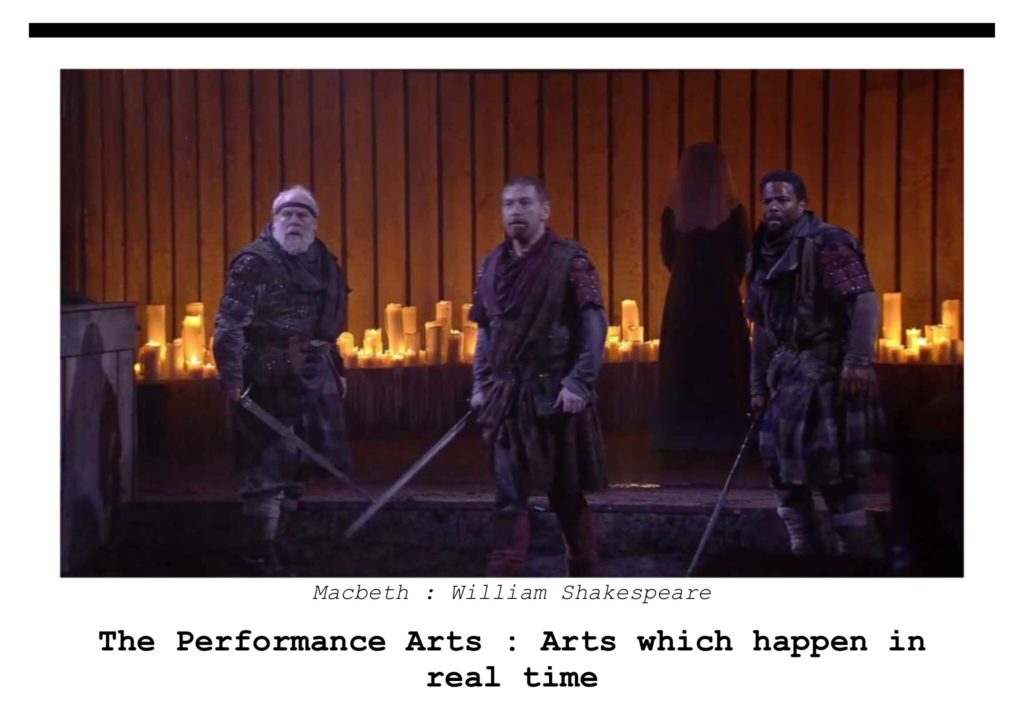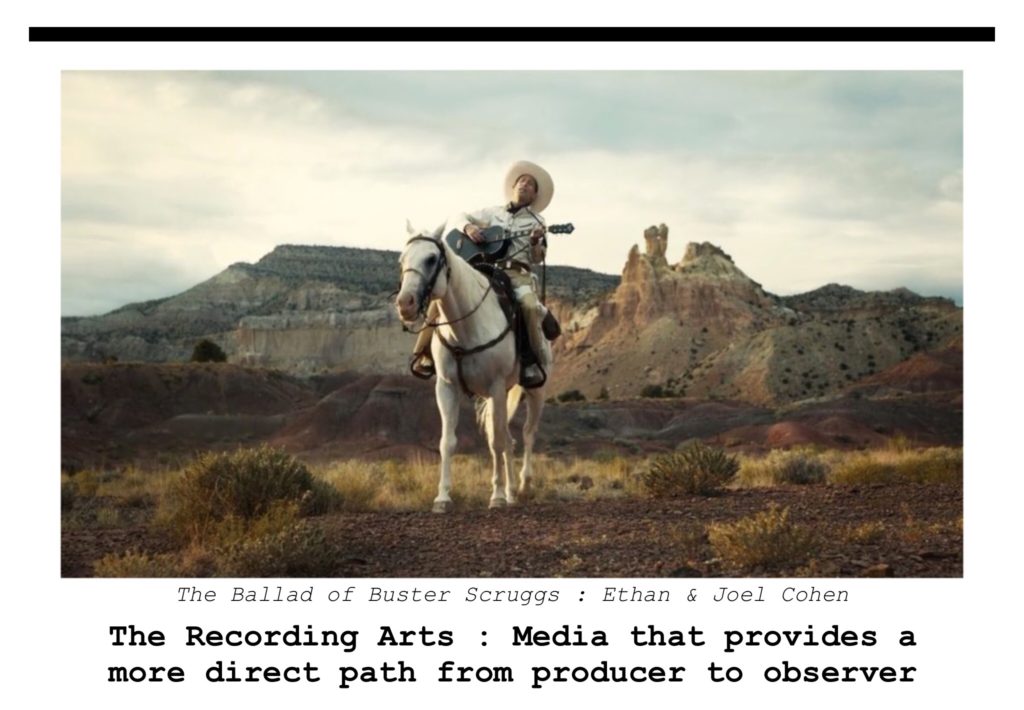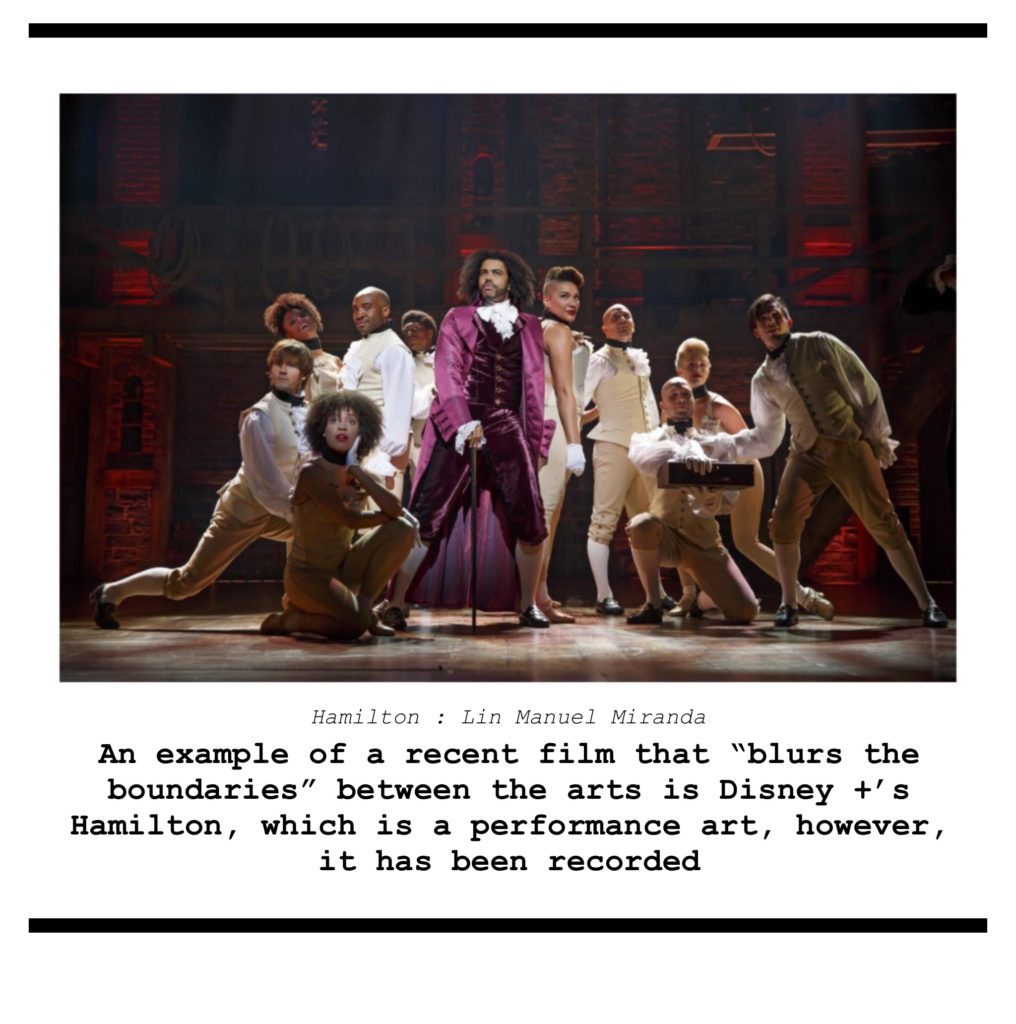Mise en scene is the arrangement of scenery and stage properties in a play. Translated from French, it means “setting the stage” but, in film analysis, the term mise en scene refers to everything in front of the camera, including the set design, lighting, and actors. Mise en scene in the film is the overall effect of how it all comes together for the audience.
In the hunger games, the director uses mise on scene to contrast the districts from the capitol or the poor from the rich. In the opening scene, the use of costumes shows the contrast between Katniss and Primrose and Flickerman and Crane. Flickerman and crane are the first people we see in the scene. Their hair is done, perhaps professionally and they’re both wearing fancy fitted suits with a bit of colour to show that they have money and they’re upper class. Katniss is wearing a badly fit shirt and Primerose is wearing a nightgown. They’re used to make the girls look poor because their clothes are cheap and old. Their hair also looks like it’s not taken too long to do and overall, they’re hair and makeup makes them seem like their lower class. This contrasts with the men because they are wearing expensive and nice-looking suits. In district 2, the girls aren’t wearing colour and their outfits seem dull but in the capitol, they’re wearing some colour which shows us the different moods in the districts and the capitol and it also shows that the people in the capitol and more powerful than those in the districts.
In the background of the tv show at the start of the scene, there are LED lights that move. This shows the audience that the capitol has a lot of money to spend compared to the shot of district 12 where the light shown is daylight. The directors use an inside setting to show the capitol as it shows that they’re sheltered whilst in the shot in district 12 it implies that they’re in danger and far from safe especially because the reaping was about to happen. A wagon is showed in the foreground along with a wooden house (suggests that they don’t have money for better-built houses) and powerlines in the distance to show that they have electricity, but their technology hasn’t developed. The wagon represents them as the working class and that they work for their money unlike the people in the capitol.
Towards the end of the scene, low key lighting is used to show that its early in the morning but daylight is shown through the cracks to represent hope later in the film and to show us that the house is badly made, badly pained, and barely decorated to represent poverty in the districts.








